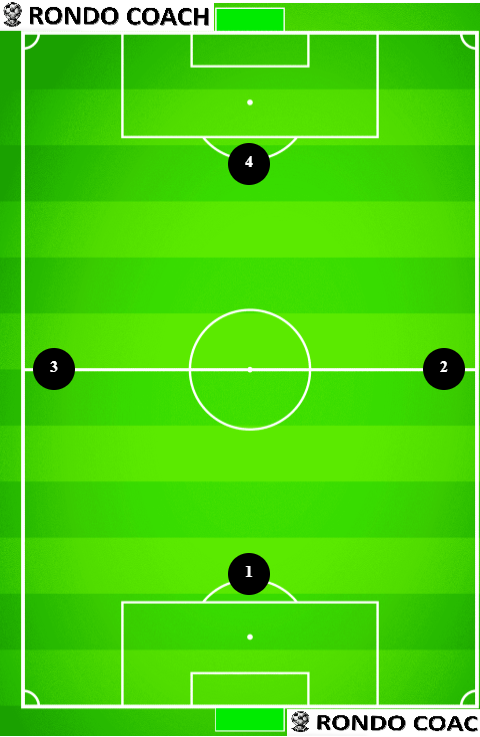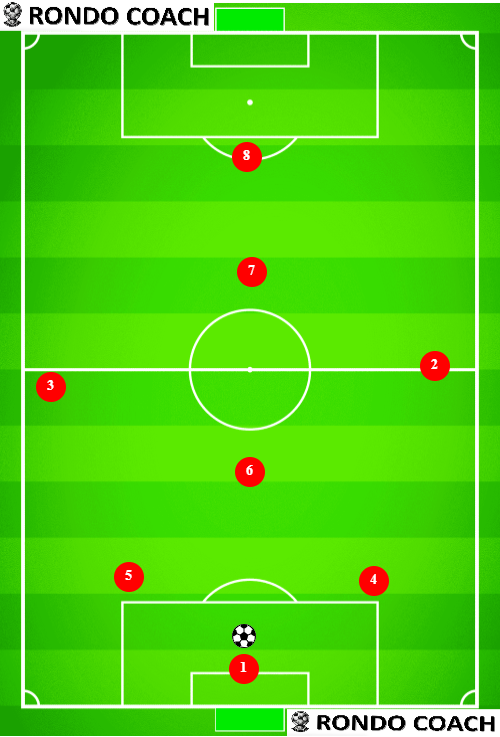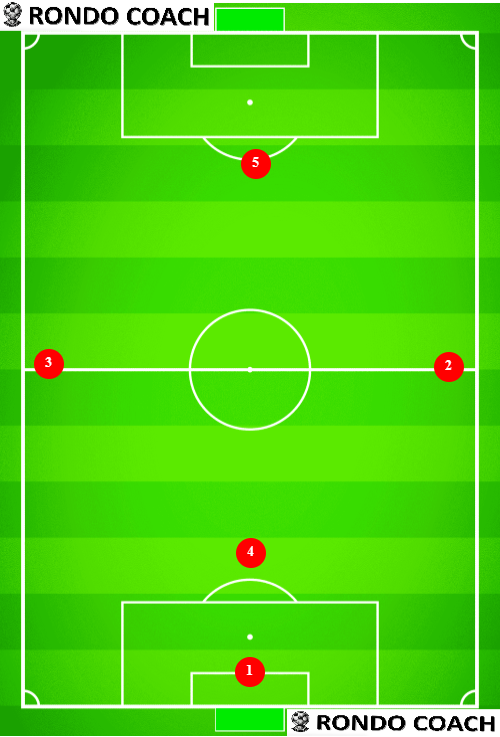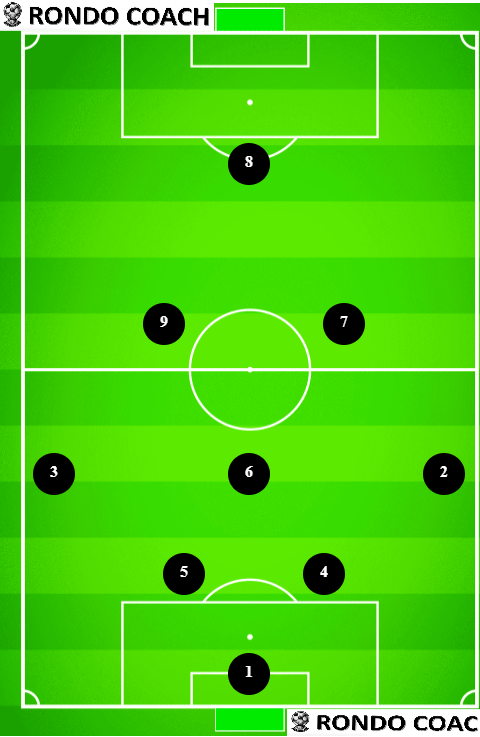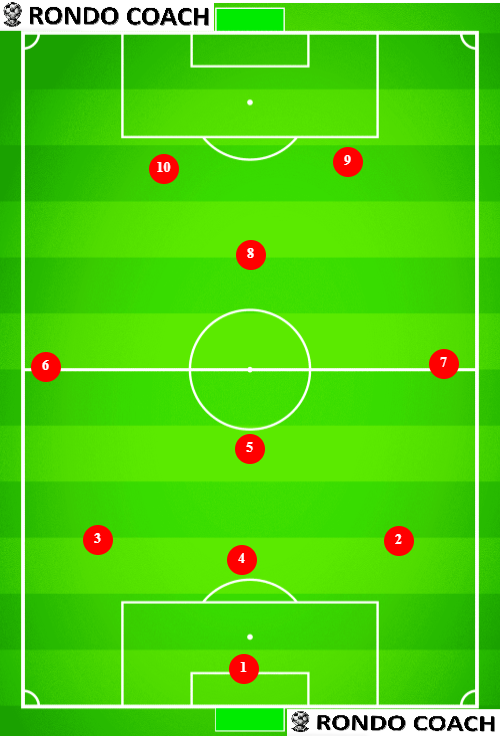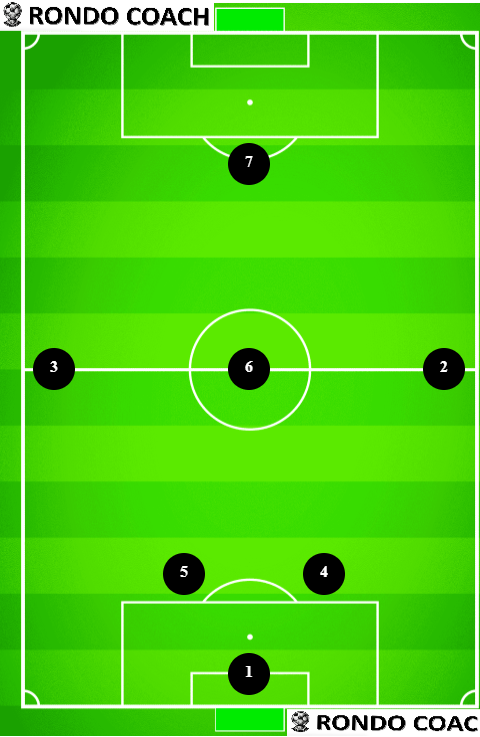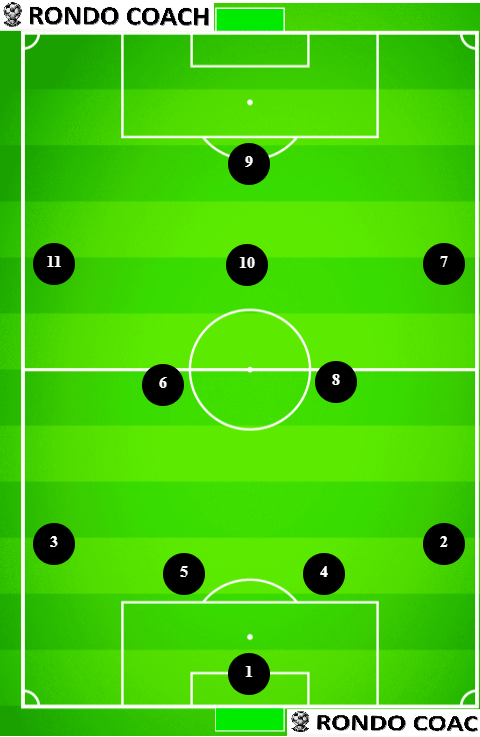6v6 Soccer Formation [Complete Guide for Coaches 2025]
While not part of the standard US youth soccer curriculum, I have played a lot of games in 6v6 soccer formation. It is often used for some variation of futsal or small-sided games. One of the players is a goalkeeper and the other 5 players are field players. Usually, there is no offside and the size of the field is small enough that the goalkeeper can be a sweeper keeper, but still need to stay in goal – not munching on protein bars, but actually participating in the game. However, because of the size of the team, it is a great opportunity for players to get many touches on the ball, and develop technical skills and also it is a great exercise with lots of short sprints. Let’s go through the formations that work best for this size of game. I will choose the best formations for both coaching and winning games.
I have played 6v6 on many indoor fields, often a bit bigger than a futsal court. Some of them have a hockey-like shape, with walls on the sides. You can pass from the wall, which is super fun. However, they often are more dangerous because of the occasional body check. Either way, it’s a high-paced game with many touches on the ball. That is perfect for technical development and also good for high-intensity exercise.
What is the best 6v6 soccer formation?
While there is no one best formation for winning the game, there are certain formations that work best. The most popular are the 2-1-2 and the 1-3-1 formations. The 1-3-1 is easier to teach and to keep shape. However, with a keeper that can play well with their feet, the 2-1-2 is the best formation to go with. It brings balance between the attack and defense, as well as stretching the field to pass the ball easily on the flanks and through the middle. The number of natural passing triangles formed by the players is the highest you can have.
The important contrast from the 5v5 soccer competition is the extra person on the field that adds complexity. Furthermore, at most levels that means that there is a person with very little chance of receiving the next pass. What I mean by that is that a person with the ball has 5 options for pass now, with the goalkeeper, 4 passes. It is very unlikely that at high-paced games, a player can see them all. When I play 4v4 soccer, I basically see all my options for passing constantly. I track them regularly and can see their movements. However, by adding a player and a defender, it becomes hard to do so. It really pushes players to improve their scanning skills by moving to 6v6. Obviously, this complexity grows at the 7v7 formation, but it’s just a building block in our tower of soccer knowledge. Now, let’s move to the formations.
2-1-2 [Guide and Progression]
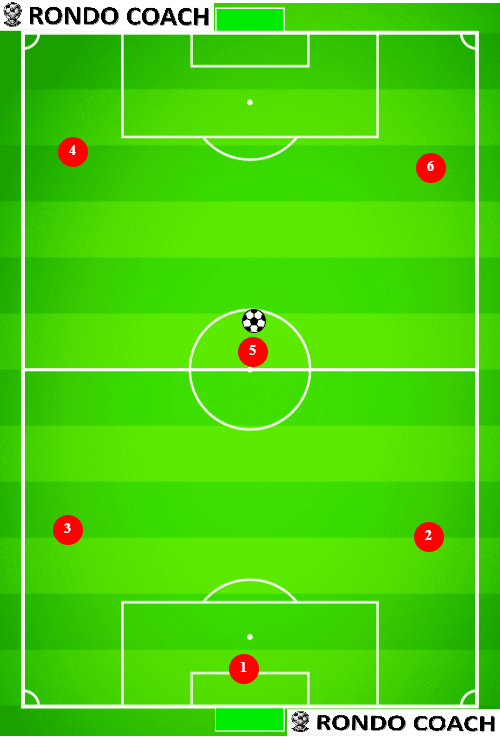
As you probably have noticed by now, I like to think of my goalkeeper as a field when in possession. Because of that, I like to play with a pair of defenders on each side of them, instead of one towering center-back. When in possession, the defenders stay wide. Then they quickly come closer when there is a chance of the team losing the ball. If the ball is with a defender on the side, then the first option is always to play it forward down the line. The goal is to play in the opposition half and the fastest way to do that is to get the ball through the line. The central midfielder is essentially a box-to-box midfielder, playing lots of first-touch passes to move the ball to other players.
This formation is perfect to break a high press, as most of the games 6v6 are. However, it is not as effective in a low-block situation. Furthermore, against 1-3-1, the middle of the pitch can look empty and your central midfielder will struggle. Finally, if your wingers are not disciplined and come back in defense. The communication between them will determine the effectiveness of this formation.
PROS
Formation that is easy to understand
Players don’t need to cover too much ground
Goalkeeper participates in building attack
CONS
The middle of the pitch can be empty
Hard to break low-block teams
Requires disciplined wingers
1-3-1 [Guide and Progression]
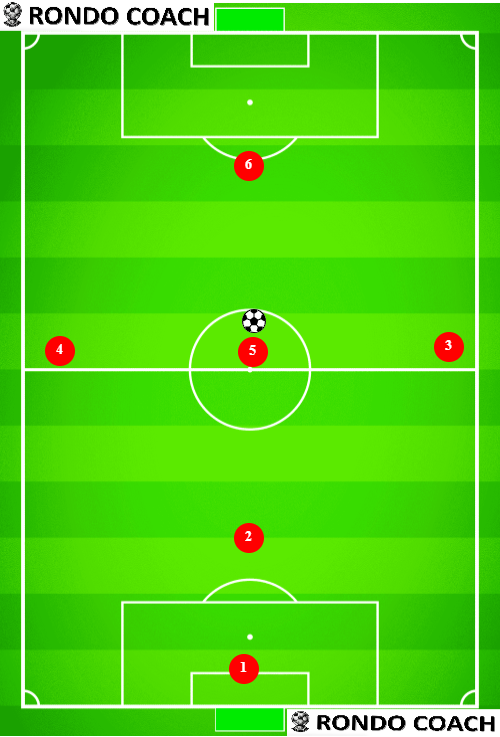
The counter to the 2-1-2 is the 1-3-1 formation. The wingers cover a lot of ground. At moments it can look like you are playing 3-1-1, like when you are playing against a high-press team. But other times you might play 1-1-3. When you need to overload the low-block team, for example.
Furthermore, this formation is easier to coach. The players know exactly what their role is. The striker stays up, the defender stays back, and the wingers stay wide.
However, this will also mean that your goalkeeper will not be part of the build out and that might be a wasted resource on the pitch. Also, when playing against any low-block team, they will try to hit you on the counterattack. When playing with one defender, you will be a target. Therefore, if you go the 1-3-1 route, it’s really about all the players being the right type and quality. You need fast wingers, a natural striker, a quality center-back, and a center midfielder that operates in very tight spaces. Fortunately, you can get away without a ball-playing goalkeeper. Overall, it is a very demanding formation for your players.
PROS
Overload in midfield
Dedicated striker
Easy to balance against high press and low block
CONS
Goalkeeper is not part of attack
Wingers must run a lot
Susceptible to fast counterattacks
6v6 Soccer Formation Transition
As always, let’s try to find the blend between the two. Any tactical approach needs to be adjustable based on the opponent. Therefore, we should strive to build with 2-1-2 from the back, using the goalkeeper as an extra. Then instead of keeping the shape, we should aim to move one of the defenders up and form a 1-2-2 or a 1-3-1 formation. When we attack from the wide areas, the defender on the side of the ball naturally pushes up and the other defender becomes the center back. Similarly, the moment the winger gets the ball high becomes the striker while the other winger becomes the winger on the other side. This fluidity and balance requires not only tactical understanding but also players who know how to play in multiple positions. Because the pace of the game is high, the players need to both move fast and think even faster. It is so important to understand the superiority of your team and exploit the opponent’s weaknesses.
Conclusion
This is the complete guide on how to play and coach the 6v6 soccer formation. While this setup is not common in the youth soccer system in the US, it can be a stepping stone to build players that can play in 9v9 formations, and even 11v11. It is common for indoor fields across the country, often on turf fields with hockey-like walls and smaller goals to have this setup.
Playing 6v6 can be extremely beneficial for technical and tactical development. Short passes, intense sprints and lots of touches on the ball – you get all that you need. However, if your goal is to win, this guide will help you win while also having fun. Do a bit of analysis on the players of your team to do your setup. Also, be ready to change it quickly as you see the opposition approach because the best way of thinking is to have a fluid setup where players can take positions where they would use the superiority over the competitors. Have fun at the pitch!

